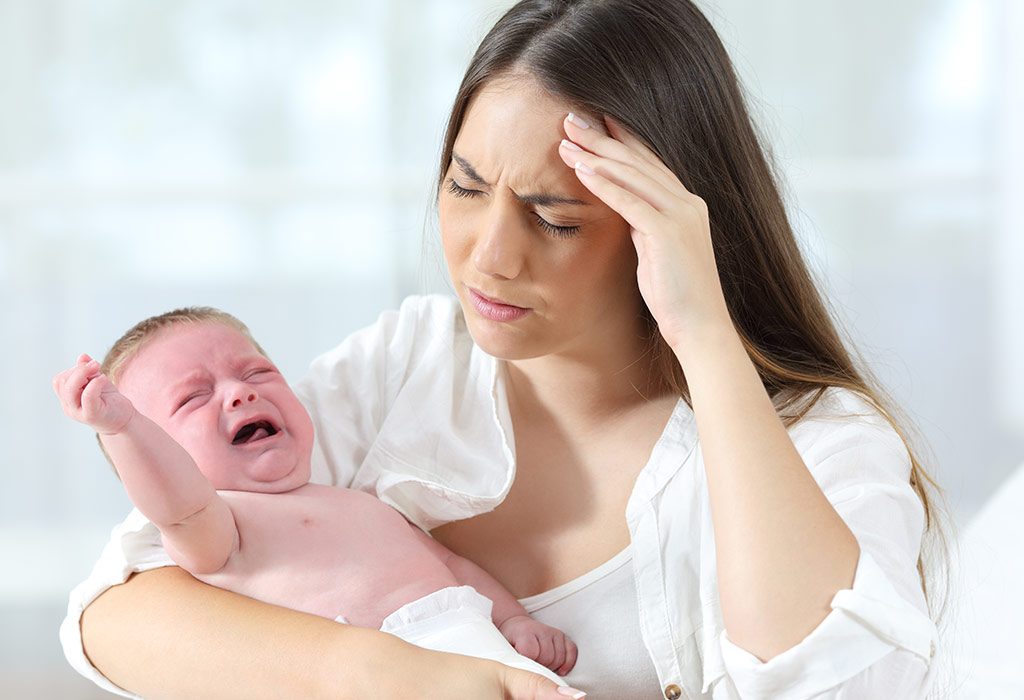After nine months of pregnancy, it’s exciting to see the baby and also relief from annoying pregnancy symptoms. Unfortunately, there are other symptoms in the postpartum period like headaches. A headache in the first six weeks after childbirth is known as a postpartum headache which occurs frequently.
Causes of Postpartum Headaches
Primary headache caused by –
- Personal or family history of migraines
- Shifting hormone levels
- Weight-loss related to hormone level drop
- Stress
- Lack of sleep
- Dehydration
- Other environmental factors
Secondary headache caused by –
- Preeclampsia
- Use of regional anesthesia
- Cortical vein thrombosis
- Some medications
- Caffeine withdrawal
- Meningitis
Does Breastfeeding Cause Postpartum Headaches?
Breastfeeding doesn’t contribute to postpartum headaches directly but may have a headache while breastfeeding for a few different reasons –
- The hormones may fluctuate while breastfeeding leading to a headache
- May be physically or emotionally drained by the demands of breastfeeding which results in a headache
- Lack of sleep or dehydration could lead to tension or migraine headache
Consult the doctor if having frequent or severe headaches while breastfeeding.
Types of Postpartum Headaches
- Primary headache – includes tension headaches and migraines
- Secondary headache – caused by preeclampsia or regional anesthesia
According to a study a sample group of 95 women with postpartum headaches –
- Almost half had a tension or migraine headache
- 24% had a headache related to preeclampsia
- 16% had a headache caused by regional anesthesia
Primary headaches –
- Tension – it’s common to experience this and is mild. Head may ache on both sides in a band around the head. The headache could last 30 min or longer for up to a week. This can be caused by stress as well as environmental factors like lack of sleep or dehydration.
- Migraine – this is severe, throbbing headaches occur on one side of the head. Also include symptoms such as nausea, vomiting, and sensitivity to lights and sounds. According to the American migraine association, 1 in 4 women will have a migraine within the first weeks after childbirth as dropping hormones that occur in the days following childbirth.
Secondary headaches –
- Preeclampsia – it is a very serious condition that can occur before or after childbirth because of high blood pressure and possibly protein in the urine. It can lead to seizures, a coma or when left untreated, death. Consult the doctor immediately in this condition.
- Postdural puncture headache – use of regional anesthesia during childbirth carries some potential side effects. This can occur if received an epidural or spinal that accidentally punctures the dura prior to delivery. This can lead to a severe headache with the first 72 hours following the procedure, particularly when standing or sitting upright.
When To Seek Help
While headaches are common, take note of symptoms of a postpartum headache. Contact the doctor immediately if headaches –
- Are severe
- There is a peak in intensity after a period of time
- Change over time or when move into a different position
- Wake up from sleep
- Occur after physical activity
- Are accompanied by other concerning symptoms such as fever, neck stiffness, nausea or vomiting, visual changes, or cognitive problems
The doctor will discuss symptoms as well as conduct an examination. Also, additional tests and procedures to diagnose a secondary headache may be needed.
Treatment for Postpartum Headaches
Treatment depends on the type.
Treating primary headaches – tension and migraine headaches can be treated with over-the-counter nonsteroidal anti-inflammation like naproxen (aleve) and ibuprofen (Advil). Most of these are safe to consume while breastfeeding with the exception of aspirin. Consult the doctor if taking another type of medication for headaches and want to determine whether it’s compatible with breastfeeding.
Treating secondary headaches – it should be treated by the doctor and may involve a more intense treatment than primary headaches.
Prevention of Postpartum Headaches
Taking care is an important way to prevent tension and migraine headaches. Few tips for preventing the occurrence of primary headaches –
- Get enough rest – try to take naps when the baby naps and ask the partner or a friend to watch over the baby between feelings.
- Drink plenty of fluid – tote around a large water bottle or make sure to have a glass of water by the side.
- Eat healthy foods regularly – stock the fridge and pantry with nutritious foods that are convenient to prepare and eat.
- Try to relax to reduce stress – take an easy walk, read a book or chat with friend to alleviate stress.
Conclusion
Postpartum headaches are tension or migraine headaches can be treated at home or with the help of a doctor. More severe secondary headaches should be seen by doctor immediately and may require a higher level of treatment to prevent more serious symptoms from occuring.
Sources:
- postpartum headaches: causes, types, treatment, prevention (healthline.com)
- postpartum headache – statpearls – ncbi bookshelf (nih.gov)













